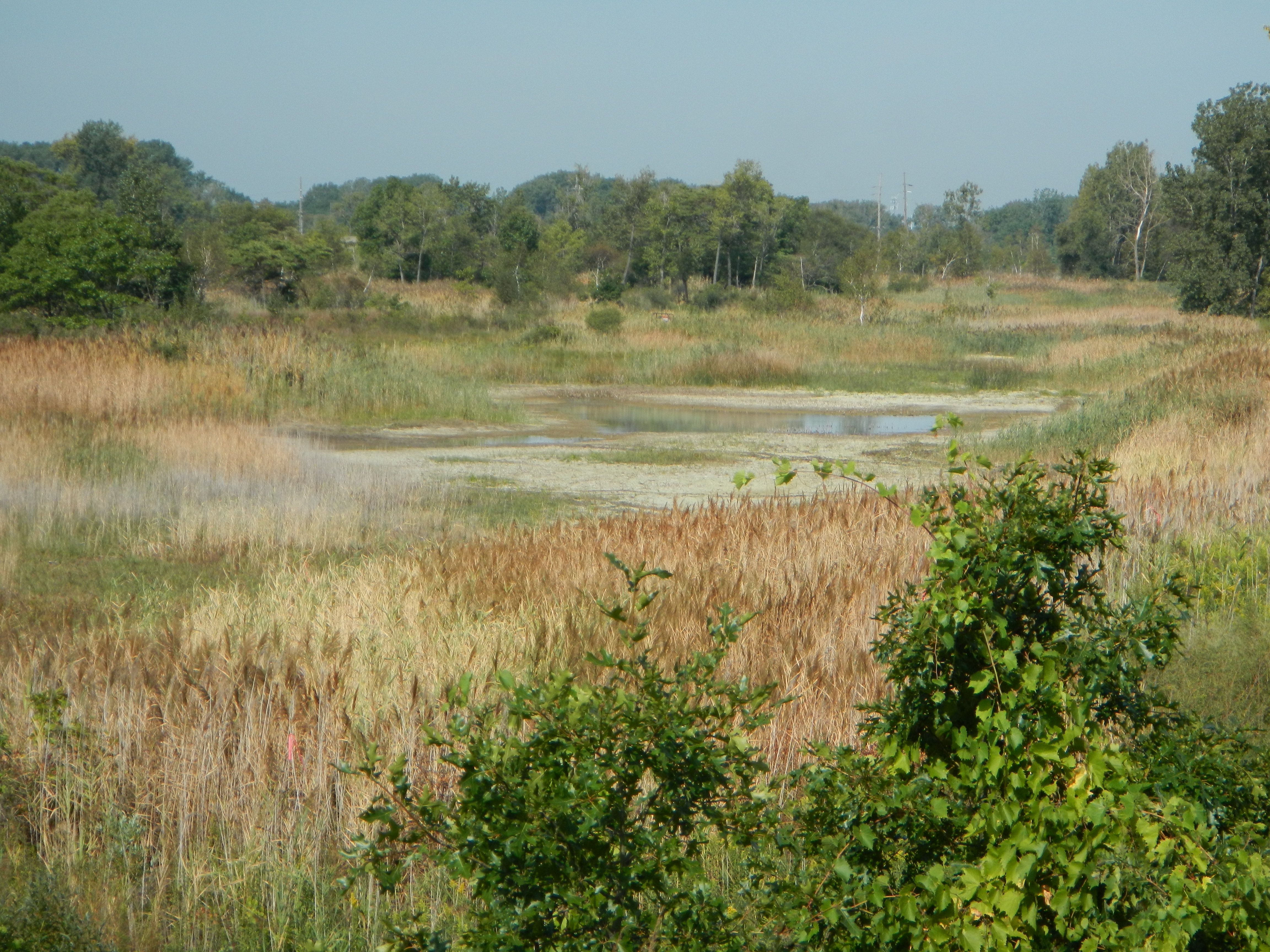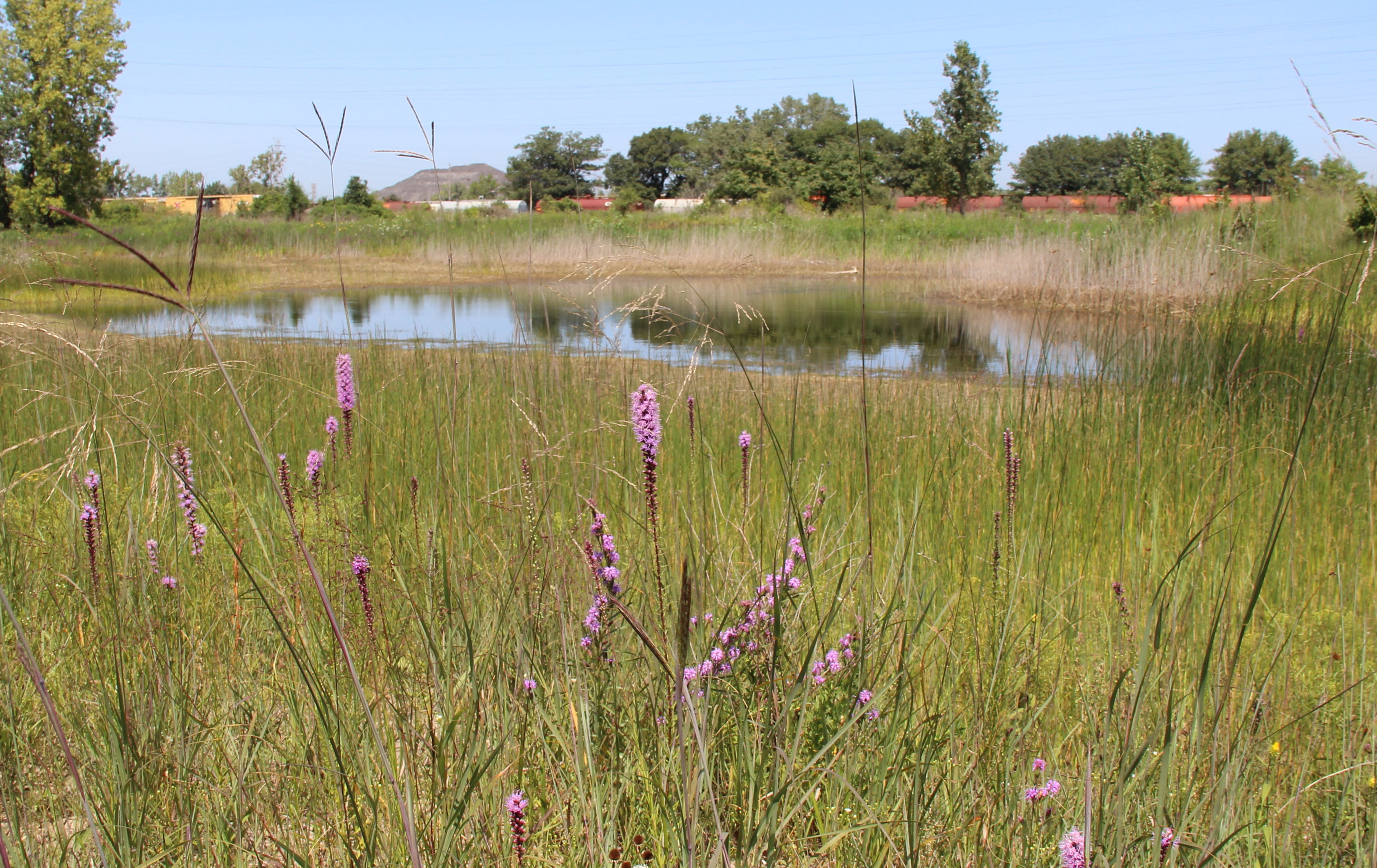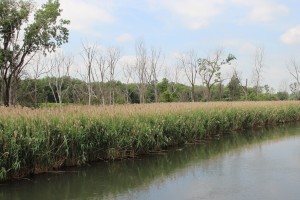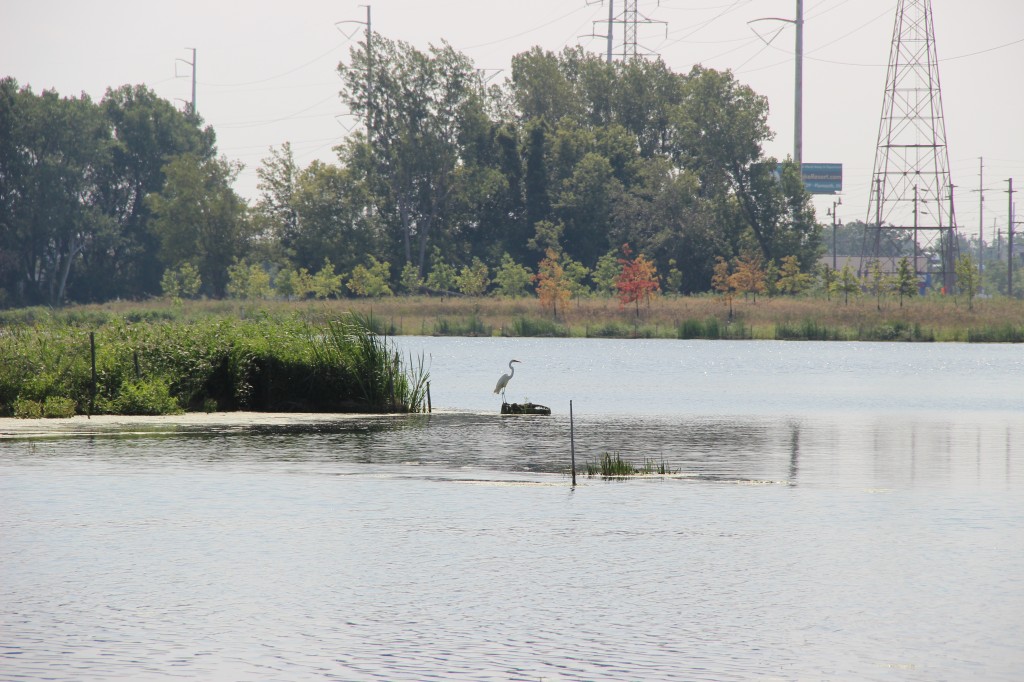Text by Kate Howe, Midwest Invasive Plant Network
Photos by Susan MiHalo, Indiana Coastal CWMA
February, 2014
Established Phragmites stands often cover many acres and cross property boundaries along lakeshores and in wetlands. Despite a land owner or natural resource manager’s best efforts to remove every Phragmites plant from the property he or she manages, the effort is doomed to failure if neighboring properties still harbor Phragmites that can readily invade managed areas. Long-term control of Phragmites is only likely to be successful when it is managed at a landscape scale through collaboration among land owners and managers.
Across the Great Lakes region, Cooperative Weed Management Areas (CWMAs) have sprung up to address invasive species management in a coordinated way. CWMAs are partnerships of government agencies, non-profit organizations, corporations, and land owners, designed to facilitate communication and collaboration across jurisdictional boundaries for improved invasive plant management across the landscape. Several Great Lakes CWMAs have had success in their cooperative efforts to manage Phragmites. In northern Ohio, the Lake Erie CWMA has made Phragmites their primary focus. Bringing together partners including The Nature Conservancy, U.S. Fish & Wildlife Service, Ohio Department of Natural Resources, Winous Point Marsh Conservancy, Ottawa Soil & Water Conservation District, and over 100 private landowners, the CWMA has treated more than 5,000 acres of Phragmites. Techniques have included aerial spraying, herbicide application by ground crews, controlled burns, and reseeding with native plants.
The Indiana Coastal CWMA works in the Lake Michigan Coastal Zone of Lake, Porter, and LaPorte Counties in northwest Indiana. Along with reed canary grass, Lyme grass, hybrid cattail, and purple loosestrife, Phragmites is one of the biggest invasive plant threats facing the region. At the Indiana DNR’s Pine Station Nature Preserve, the ICCWMA treated Phragmites and hybrid cattail on 147 acres. Before and after photos show the extent of Phragmites before treatment and the native plant community returning after treatment. A larger project to remediate and restore the Grand Calumet River, involving collaboration with the US EPA, Indiana Department of Environmental Management, and The Nature Conservancy, has resulted in the treatment of hundreds of acres of Phragmites growing in dense, monotypic stands along the river.
Across the region, CWMAs are working together on Phragmites management. From Michigan’s Upper Peninsula Resource Conservation Development Council and five CWMAs in the Upper Peninsula working to treat Phragmites along Lake Superior and northern Lake Michigan to the collaborative effort of the Northeast Illinois Invasive Plant Partnership on Illinois’ North Shore, CWMAs are making headway on managing Phragmites across jurisdictional boundaries. For more information about starting a CWMA or to find a CWMA in your area, visit http://www.mipn.org/cwma_resources.html.




